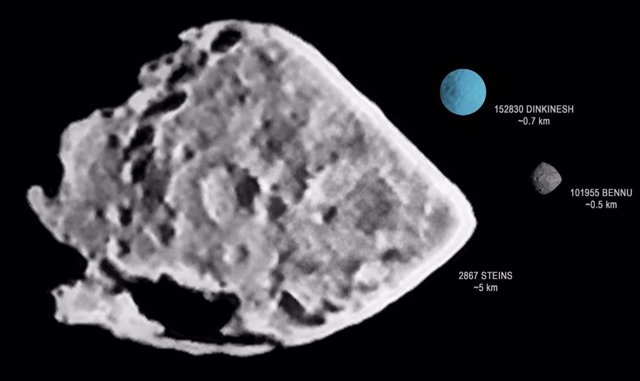13 Feb. () –
The International Astronomical Union (IAU) has approved the name (152830) Dinkinesh for the small main belt asteroid. that the spacecraft Lucy will encounter on November 1, 2023.
“Dinkinesh” is the Ethiopian name for the fossil of a human ancestor, also known as Lucy, which was found in that country and is currently preserved there. Dinkinesh means “you’re wonderful” in amharic.
In 1999, when the Dinkinesh asteroid was first discovered, it was given the provisional designation 1999 VD57. Years later, when its orbit was sufficiently well determined, it was assigned an official number (152830). But, like most of the millions of small asteroids in the main asteroid belt, it was not given a name. However, once Lucy’s team identified this asteroid as a target — a first for this mission that will visit dozens in total — the team proposed this new name, inspired by Lucy’s mission to explore remnants of the early solar system.
“This mission was named after Lucy because, just as that fossil revolutionized our understanding of human evolution, we hope this mission will revolutionize our understanding of the origin and evolution of our solar system,” he said. it’s a statement Keith Noll, project scientist for Lucy, at NASA’s Goddard Space Flight Center in Greenbelt, Maryland. “We are excited to have another opportunity to honor that connection.”
The main reason the team has added Dinkinesh to Lucy’s already tight tour (10 asteroids, including the newly discovered satellites) is to test the innovative terminal tracking system, essential for accurate imaging during these high-speed encounters. Although the asteroid is less than half a mile (less than a kilometer) in diameter, it is an excellent opportunity to test Lucy’s systems before the main science activities of the mission: learn about the never-before-explored Trojan asteroids from Jupiter, which are in many ways fossils of our early solar system.
“This is really a tiny asteroid,” explains Hal Levison, Lucy’s principal investigator, from the Boulder office of the Southwest Research Institute (SwRI). “Some members of the team affectionately call him ‘Dinky’. But for a small asteroid, we expect it to be a big help to the Lucy mission.”






![[Img #74662]](https://thelatestnews.world/wp-content/uploads/2024/12/Organisms-with-the-shortest-life-150x150.jpg)






![[Img #74662]](https://thelatestnews.world/wp-content/uploads/2024/12/Organisms-with-the-shortest-life-300x200.jpg)

